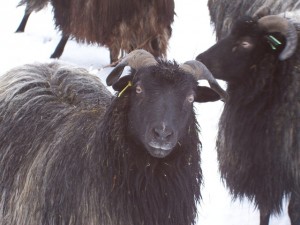Fairy Tale Animals Are a Moral Coping Mechanism
I imagine if sheep were self-aware, or had any spec of intelligence beyond an ability to be scared by barking dogs, they could find themselves a comfortable niche within the winter clothing market. The old nursery rhyme, Baa Baa Black Sheep, has us believe that the sheep already does this when it answers, “Yes sir, yes sir, three bags full,” when asked about its inventory of wool. Besides the needlessly polite quality of this “black” sheep’s language, the entire scenario is preposterous. We’re led to believe by the end of the second line that the sheep is the proprietor of its own wool supply business; however, the third line has the sheep answering, “One for my master,” instantly dissolving the notion that this particular sheep has any agency in this situation.
Baa Baa Black Sheep, however, is a fairly innocuous offender when it comes to animal misconceptions in fairy tales. Even though the sheep is overly polite and sophisticated, the presence of a master ties the sheep to reality. The same can not be said for the Three Little Pigs. Never has a tale so callously mocked the position of pigs in society. Not only can a pig build a house of straw, but of sticks, of bricks? Can we not be led to the logical conclusion that these pigs are also going to market and hosting cannibalistic breakfast feasts? These fables make no attempt to portray animals in a realistic way, rather, they are used to placate human guilt over our carnivorous appetites.
Examine the list of protagonists in stories, television and movies where the main characters are animals. In this category we have: cows, pigs, sheep, chickens, deer, rabbits, small fish, etc. These are animals who are prey, animals who live in a constant state of fear and anxiety as a necessity for survival. These animals are portrayed as good natured, genuinely innocent, and very human. Who are the antagonists in these stories: wolves, sharks, eagles, snakes, animals that humans have much more in common with. Why then, is it prey that are always the good guys in our stories. Why do we choose to inflate the dominated members of nature to great heroic heights, and demonize those animals who behave in nearly the same way we do.
The issue is one of soothing guilt. We antagonize our most savage predatory characteristics while also lifting its victims from the cruel natural world. It reflects our inability to deal with reality: suffering, death, violence, even simple food chain systems. In our fiction we make those that suffer most at our hands the heroes. We allow them to become something far more than they will ever be. Pigs across America and the world snort and whine from the pain of confinement and slaughter while their fictional counterparts outwit and charm their enemies. Three Little Pigs and Black Sheep make us feel good because we’ve set these animals free and let them be like us, but in the end we sacrifice nothing.

0 Comments